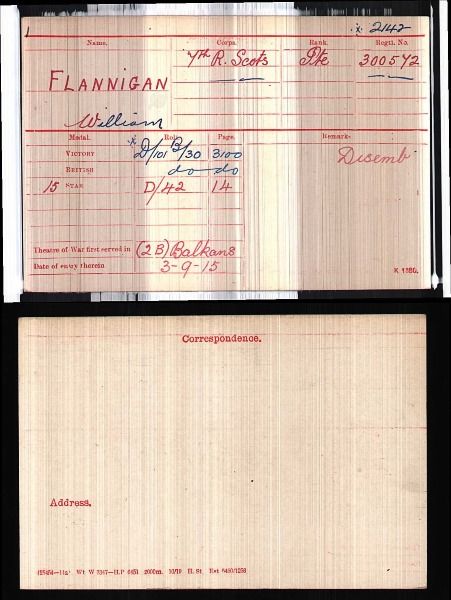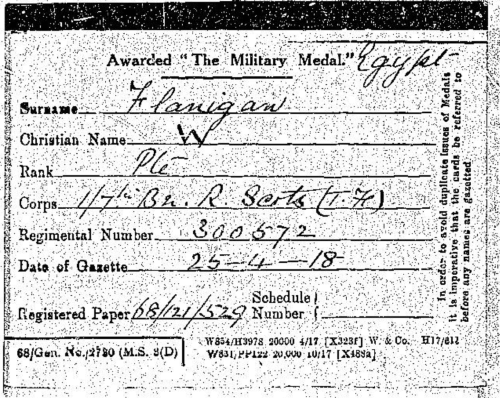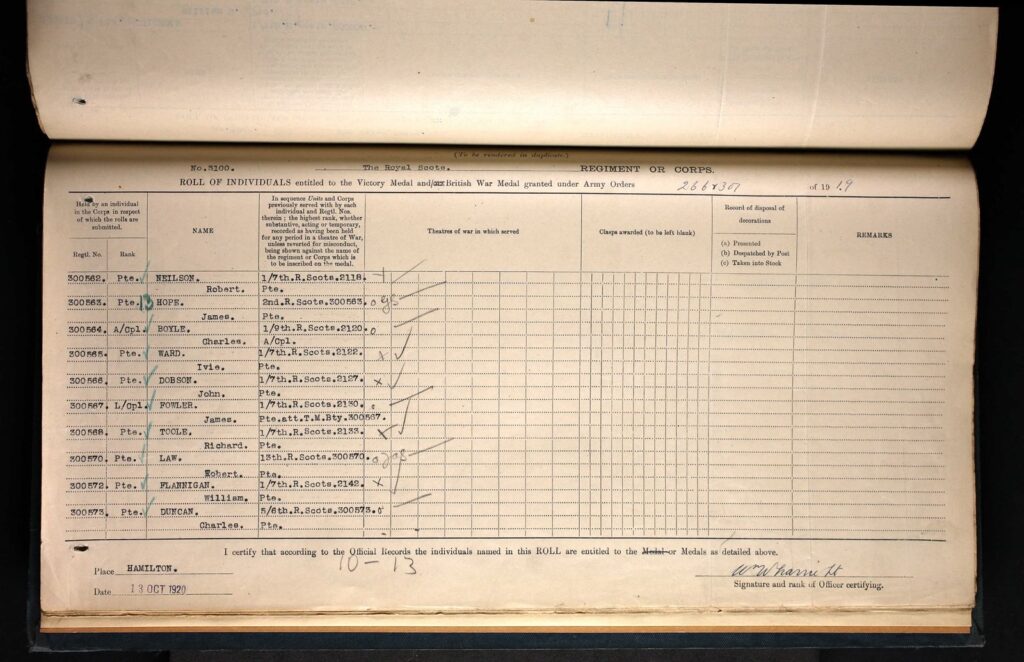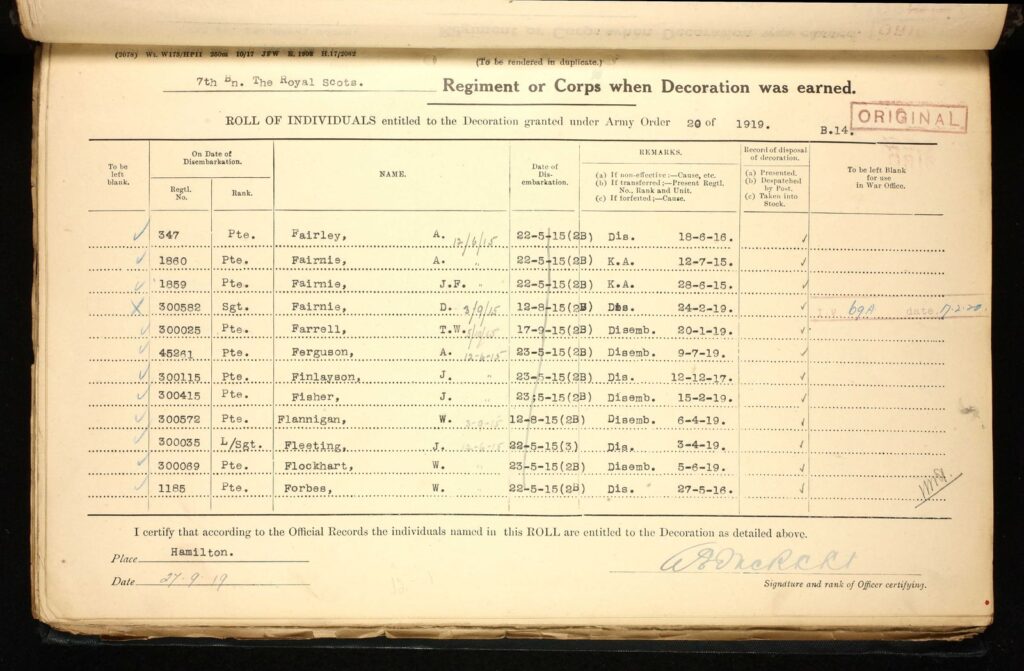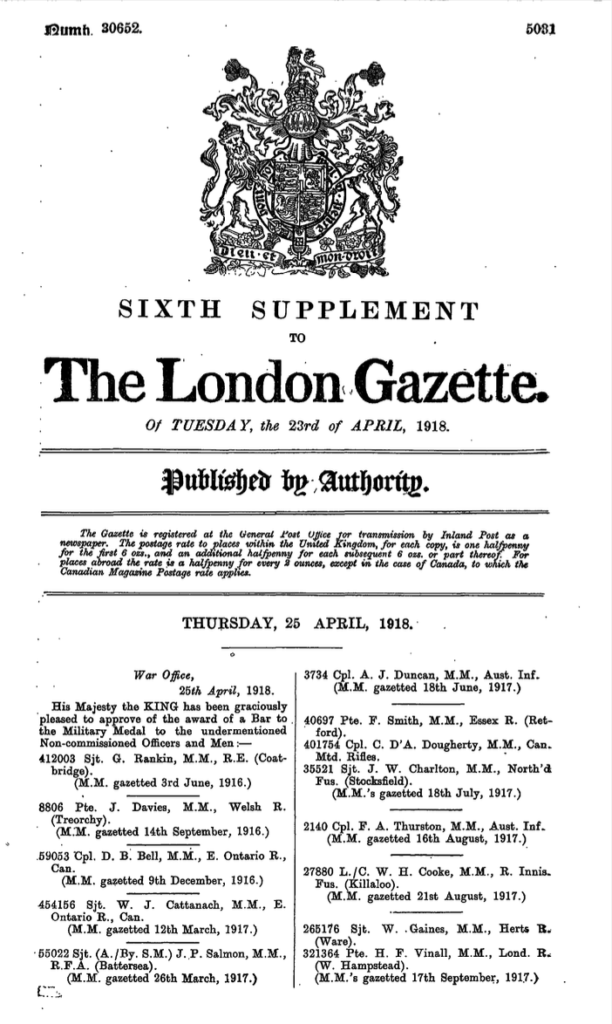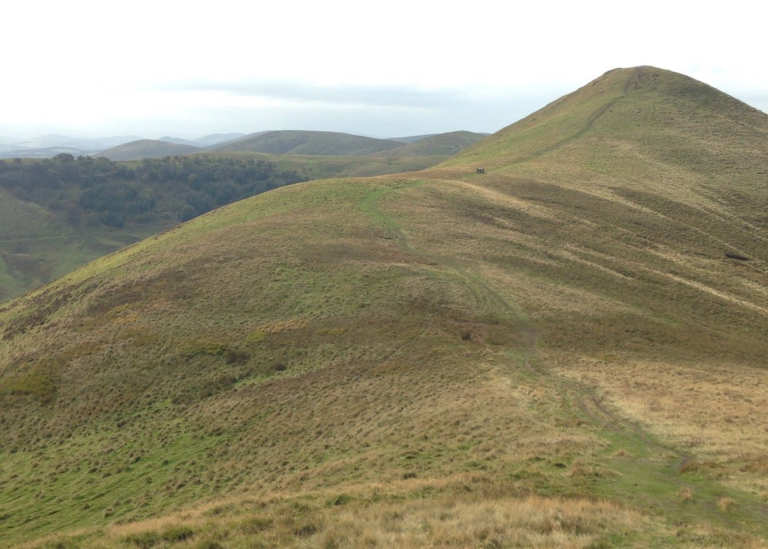WW1 service William Patrick Flannigan (b. 1888)
William Patrick Flannigan (b. 27 Sep 1888), my paternal great grandfather, was a Private in the 7th Battalion, Royal Scots and on active service during World War 1. The Royal Scots was an infantry regiment of the British Army, the 7th Battalion being part of the Lothian Infantry Brigade. Originally mobilised in Leith, Edinburgh in August 1914.
The 7th Battalion, Royal Scots are sadly infamous for their involvement in a rail accident at Quintinshill, near Gretna, on 22nd May 1915. Considered the worst rail disaster in British history. A troop transport carrying members of A and D company collided with a stationary passenger train. Of the 500 soldiers on the train, 210 officers and men were killed, and 224 injured.
William doesn’t appear to have been involved, possibly due to being a member of a different Company, although I haven’t yet confirmed this yet. However, in a cruel twist of fate, his first wife Janet Napier (b. 1889) was originally married to Peter Ritchie (b. 1885) who was killed in the Quintinshill disaster at just 29 years old.

William enlisted on 03rd November 1914 (Regiment number 300572), and the battalion was sent to Gallipoli on 14th June 1915, via Egypt on the HMT Empress of Britain. They returned to Egypt on 08th January 1916, serving both there and in Palestine, until April 1918. Next, the battalion moved to France, landing at Marseilles on 17th April 1918, where they served on the Western Front until the end of the war, returning home in May 1919 (‘The Royal Scots in the 20th and 21st Centuries‘, essays b The Royal Scots Regimental Museum and Heritage Comittee)
William’s time in Gallipoli is confirmed by his medal roll card where the theatre of war is shown as “2B Balkans”, referring to Galipolli (Dardanelles). He was removed from active service – aka disembodied – on 06th April 1919. The Wartime Memories Project lists several locations and battles worth investigating for any information about William and his battalion.
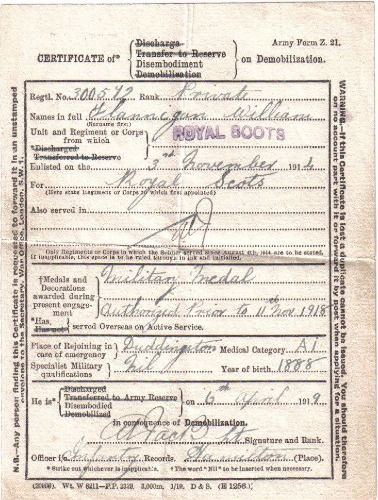
William received several common medals for his service in WW1, as noted on his medal roll index card and the relevant medal and award service rolls:
- The 1914-1915 Star was awarded to officers and soldiers of British and Imperial forces who served against the Central European Powers in the First World War.
- The British War Medal was awarded to officers and soldiers of British and Imperial forces serving in the First World War.
- The Victory Medal was awarded to anyone serving in the armed forces of the United Kingdom or the British Empire, in any theatre of war between 5th August 1914 and 11th November 1918.
Although William likely volunteered for service during World War 1, he would have been too old for conscription during World War 2 (by 1942, when William was 54, the age limit was 51). Further research is needed to determine if this was William’s only military service, and in what Company of the Royal Scots he served.
I currently have very little information about William’s life outside the military, though we know he continued to work as a brewery cooper. He also married Janet Ritchie, née Napier, after the war, in 1919, and later Helen Weddell around 1948 (Scotlands People record 685 / 8 / 21).
This post is a response to Amy Johnson Crow’s 52 Ancestors in 52 Weeks theme of “War and Peace”.
